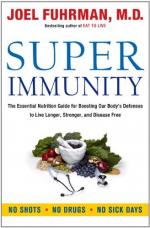|
This section contains 1,186 words (approx. 4 pages at 300 words per page) |

|
Angiosperms and seed-bearing conifers provide a source of nutrients and habitat for large grazing mammals and birds as well as numerous species of insects and related arthropods. For many insect herbivores, the entire life cycle takes place on or within plant tissue. The evolutionary success of these plant taxa, the most conspicuous plants of our geological age, is due, in part, to their ability to adapt to a broad range of environments as well as their development of defenses against vertebrate and arthropod herbivores. Physical adaptations evolved by these vascular plants to defend against herbivores range from simple structural barriers to complex changes in anatomical form. Plant organs at which major defensive interaction with herbivores occurs include stems, leaves, and reproductive structures.
External Defenses
The leaves, stems, and aerial reproductive organs of vascular plants provide a large surface area and many opportunities for use as food...
|
This section contains 1,186 words (approx. 4 pages at 300 words per page) |

|


